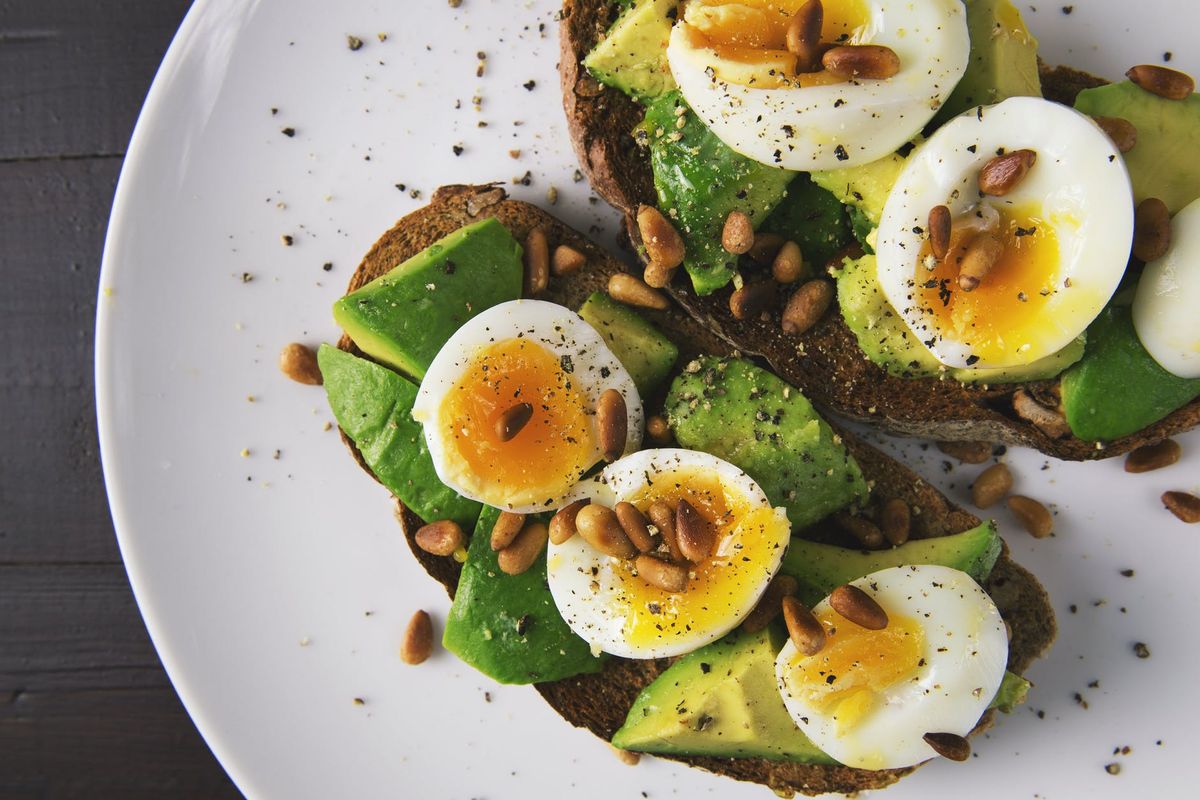Is the keto diet sustainable?

A few minutes every morning is all you need.
Stay up to date on the world's Headlines and Human Stories. It's fun, it's factual, it's fluff-free.
The ketogenic diet (or keto diet) has gained significant popularity in recent years for its ability to help you shed weight quickly – but is the keto diet sustainable in the long run? Fitness influencers and health gurus have promoted the adoption of the keto diet for those looking to lose weight.
However, losing weight rapidly isn’t necessarily a good thing. Most weight loss sources will tell you not to lose more than two pounds per week. So, with the keto diet promoting this possibility of being able to lose more weight, and quickly, it begs the question of if the keto diet is healthy. Furthermore, is the keto diet sustainable for long term results?
What is the keto diet?
The popularity of the keto diet is not surprising, as it has shown to provide several benefits such as:
- Improved sleep
- Hunger and appetite control
- Mental clarity
- Weight loss
- Improved memory
- Lowered blood pressure
- Decreased anxiety
- Improved energy
- Reduced heartburn
- Improved self-discipline
- Stabilized blood sugar and improved insulin sensitivity
- Improved immune system and slowed biological aging
- Improved skin conditions
But what is the keto diet? Simply put, the keto diet is a high-fat, low carbohydrate diet which guides the body to a metabolic state known as ketosis. During ketosis, the fat in your diet is used for energy instead of carbohydrates. This physical state is an adaptation normally meant to help us survive famines and other extreme circumstances where we have limited access to food.
As a nutritional plan, the ketogenic diet was originally developed in the 1920s to help treat epilepsy in children. As a replacement for intermittent fasting, the keto diet was a more sustainable lifestyle for kids suffering from severe epilepsy. Since its origin, the keto diet has been studied for its benefits for other ailments including Alzheimer’s disease, Parkinson’s disease, sleep disorders and more.
The name keto comes from the fact that adopting this state causes your body to produce tiny fuel molecules in your liver called ketone bodies, or just ketones, for short. These molecules serve as an alternative fuel source for your body when your blood sugar (i.e. glucose) levels are low.
Our bodies require massive amounts of energy to properly function throughout the day. It is the sole reason why food is a necessity. The human body relies on two energy sources to function well: ketones and glucose.
Thus, while on a ketogenic diet, your body essentially switches its primary source of fuel to ketones, meaning you’re able to burn fat throughout the day. Fat burning has been shown to increase when insulin levels fall dramatically low, as accessing your body’s fat stores becomes easier by consuming fewer carbs.
There are many different reports as to how many carbohydrates should be consumed on a keto diet – some suggest consuming no more than 20g of net carbohydrates daily, while others say you can eat up to 50g while still following the keto diet.
The general consensus suggests that as long as you consume less than 50g of net carbohydrates daily, your body will enter ketosis within 2-4 days. However, other factors such as physical activity levels, metabolism, age and your caloric intake will affect the rate at which your body can enter ketosis.
How to follow the keto diet
If you’re following the keto diet, you should be consuming less than 50g of net carbohydrates daily. What is the difference between carbohydrates and net carbohydrates? Net carbohydrates are the carbs that are actually absorbed by the body.
When reading nutrition labels, you will often see the total carbohydrates in the product, and listed underneath are the fiber and sugar amounts, too. In order to calculate the net carbohydrates, simply subtract the fiber content in the product and any sugar alcohols that may be present from the total carbohydrates amount.
For example, in the picture above, the total carbohydrates present in a 20g serving is 28g, out of which 3g are fiber and 4g are sugar alcohols. So, to calculate the net carbohydrates in this product, simply do the following calculation: 28g of total carbs – 3g of fiber – 4g of sugar alcohols = 21g of net carbs.
What are the signs of ketosis?
It is recommended to follow the following ratio of macronutrient distribution during the keto diet:
- 60-70% of your daily caloric intake from healthy fats (i.e. foods low in saturated fat)
- 20-25% of your daily caloric intake from protein
- 5% of your daily caloric intake from carbohydrates
If you are able to implement the keto diet successfully into your lifestyle, there are a few signs of ketosis to watch for: increased urination, reduced hunger, “keto breath,” dry mouth and increased thirst and a potential increase in energy. There are also keto strips available for purchase that measure the ketones in your urine for a more precise determination.
Although being in ketosis may produce more quickly noticeable results, many people experience adverse effects like constipation, sugar and carb cravings, irritability, hypoglycemia and more. Additionally, some followers may not make the best choices when it comes to choosing fats, leading to increased cholesterol and other issues related to a diet high in saturated fats.
Is the keto diet sustainable?
Due to the popularity of the keto diet and the shared stories of people’s impressive body transformations, it is commonly believed that consuming carbohydrates in general leads to weight gain. This is especially believed if you begin consuming carbs while on the keto diet, since your body will stop using ketones as it primary fuel source, halting the “fat burn” entirely.
However, this could not be further from the truth. If you want to lose weight and fat sustainably and in a healthy manner, you need not follow fad diets like the keto diet or the Atkins diet plan. In fact, the extreme limitations of the keto diet calls to question – is the keto diet sustainable?
Losing weight is as simple as being in what is known as a caloric deficit. Essentially, this means you consume fewer calories than you burn. Believe it or not, it is still possible to gain weight while on a keto diet. This will occur if you are at a caloric surplus, meaning you are consuming more calories than you burn.
Determining how many calories you burn throughout the day may be difficult, however one way to find out is to calculate your Total Daily Energy Expenditure, or TDEE for short, using a TDEE calculator. Once you have figured out your TDEE, simply consume between 250-500 calories less to lose weight.
With regards to macronutrient distribution, the primary macronutrient that needs to be focused on during weight loss is protein. You’ll want to ensure that while you are losing weight, you are shedding off fat and not muscle. A sufficient amount of protein to ensure muscle retention is between 0.8-1.2g per pound of body weight.
While the keto diet can prove to be a great way for one to lose a couple of pounds off the scale, the idea of consuming less than 50g of net carbohydrates daily severely restricts the types of foods you can enjoy. Say goodbye to breads, grains and even some types of fruits.
A healthy and sustainable diet should be one that is able to help you reach your goals without ever feeling that you are dieting. By being in a caloric deficit, you will not have to constantly worry about a few carbs, as consuming sufficient protein and burning more calories than you consume will allow you to lose weight – and likely keep it off longer.
Have a tip or story? Get in touch with our reporters at tips@themilsource.com




Comments ()